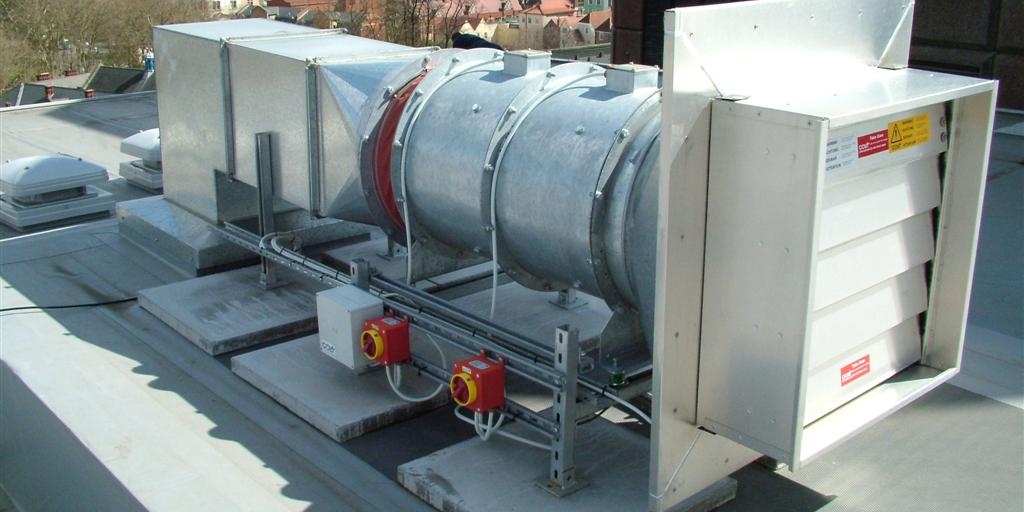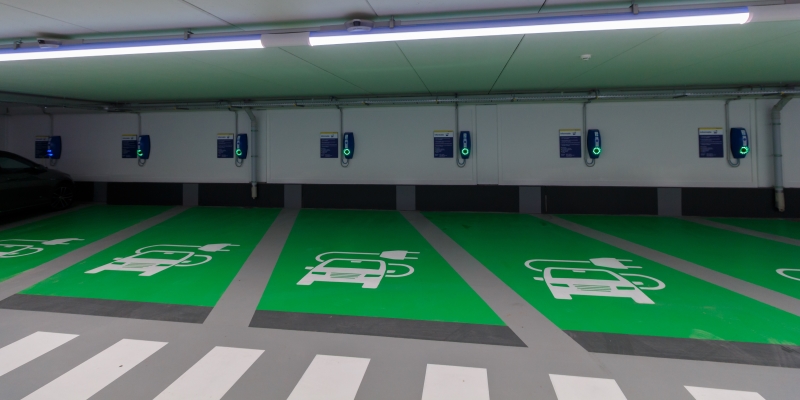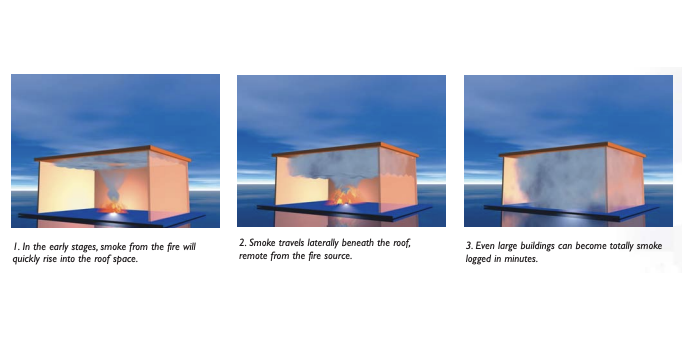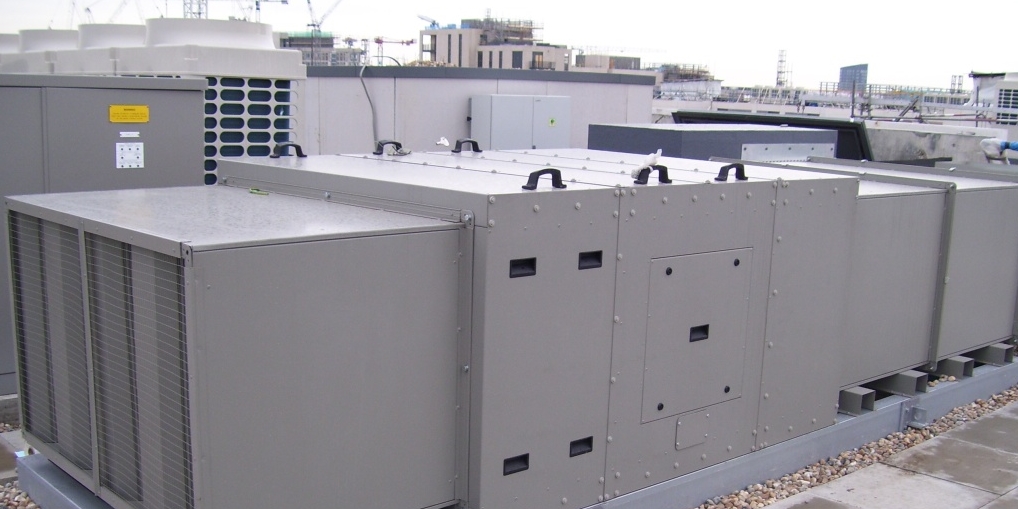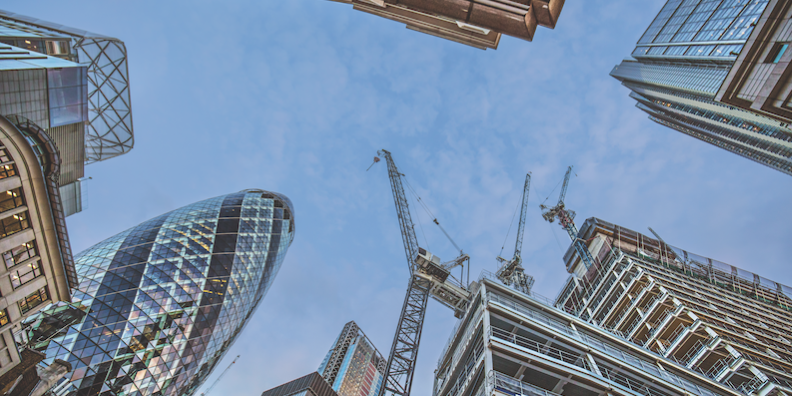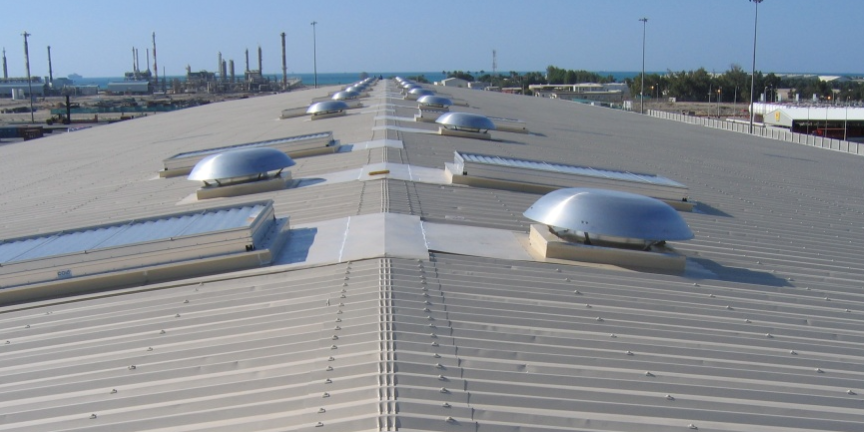Every day, our technical consultants and designers deal with a wide range of projects and challenges that require specific knowledge and expertise in smoke control design and installation.
To help us share some of this knowledge with you, we asked them to compile a set of questions and answers for the most frequently queried topics from customers - we ended up with eight subjects:
Car Park Ventilation
Natural vs. Mechanical Ventilation
Smoke Control & Fire Dampers
Environmental Ventilation
CFD (Computational Fluid Dynamics)
The Components of a Smoke Control System
When Do You Need Smoke Control in a Building?
Pressurization Systems
In part 1 of this blog, we will cover Car Park Ventilation, Natural vs. Mechanical Ventilation, Smoke Dampers and Environmental Ventilation. To get an email notification when Part 2 is released, subscribe to our blog.
Read More
Topics:
Smoke Control,
Smoke ventilation,
HVAC,
Controls
Electric cars are becoming more prevalent and car parks are facing a new risk with the growing numbers of cars being charged in them. This may lead to a number of fires in their lithium-ion batteries, that will pose a challenge to firefighters and to those responsible for safety in the car parks.
Read More
Topics:
Smoke Control,
Smoke ventilation,
HVAC,
Controls
Under The Regulatory Reform (Fire Safety) Order 2005 (RRO), the “Responsible Person” (typically a building owner and/or operator) must ensure their smoke control systems are maintained in an efficient state, are in efficient working order and in good repair at all times. If this is you, it is your responsibility to check that contractors have the qualifications, accreditations and training to work in accordance with the latest regulations. The Department for Levelling Up, Housing and Communities (DLUHC) suggests that the “smoke control system should be maintained by a competent person who is familiar with the fire engineering performance specifications of that specific system”.
Read More
Topics:
service,
smoke control maintenance
When a fire breaks out, the consequences can be devastating. In warehouses or other large, single-storey buildings such as factories, not only are lives put at risk, but large quantities of stock can be destroyed as well. Depending on the damage caused, days or months of production time can be lost – a challenge that most companies might find it difficult to recover from.
In this blog, we aim to give you some more information about how a smoke control and smoke clearance system can help to reduce damage to buildings and stock, whilst keeping occupants safe.
Read More
Topics:
Smoke Control,
Smoke ventilation,
HVAC,
Controls
Shopping centres are some of the most complex retail structures and as such, the Building Regulations have a strong emphasis on the provision of life safety systems such as smoke control in them. A well-designed smoke control system can play a big part in helping people escape quickly and should be able to maintain smoke-free escape conditions at low level to allow the building to be evacuated with minimum risk of smoke inhalation, injury or death.
Read More
Topics:
service,
smoke control maintenance
To get started on this topic, let’s first explore what a fire curtain is and how it helps keep buildings safe. A fire curtain is a flexible fire-rated barrier that is held out of sight in a headbox until needed. When activated by a fire alarm system, a fire curtain automatically drops down, between guide channels to seal the space where a wall and door would normally have been.
Read More
Topics:
service,
smoke control maintenance
Smoke control systems are vital to keeping buildings and occupants safe. However, unfortunately there are also occasionally times when things can go wrong and the systems fail. In this blog, we aim to cover some of the most common issues and how they can affect the overall performance of smoke shaft systems.
Read More
Topics:
Smoke Control,
Smoke ventilation,
HVAC,
Controls
We frequently write about why it is important to maintain your building’s smoke control systems properly, but less so about what might cause a smoke control system to fail or not function properly when needed if proper maintenance is not upheld. In this blog, we aim to give building owners and operators a better understanding of common issues they should look out for and how they can help keep buildings safe.
Read More
Topics:
service,
smoke control maintenance
Act responsibly or face hefty financial and legal consequences. This is the message the government is sending to manufacturers, installers and suppliers of fire safety equipment with its latest amendments to The Building Safety Bill.
In February, the government tabled 38 pages of amendments to The Building Safety Bill that would impose extremely stringent penalties on manufacturers, installers and others across the industry who do not comply with the proper standards and regulations. Although the main driver for these changes is cladding issues, systems and products like smoke control, sprinklers and fire alarms are also included.
Read More
Topics:
Smoke Control,
Smoke ventilation,
HVAC,
Controls
In this blog, we aim to provide guidance on UK legislation with particular emphasis on the regulations in England that form the basis for smoke control design. Since local government was devolved, each nation state has produced its own guidance framework for construction. In England this is defined by the Building Regulations 2010 and the Approved Documents – specifically Approved Document B for Fire Safety. In Wales it is similar, except the Approved Documents are specific to Wales. In Scotland, the requirements are set out in the Building (Scotland) Regulations 2004 and the supporting guidance can be found in the Building Standards Technical Handbooks – Section 2 for Fire Safety. Finally, for Northern Ireland, it would be the Building Regulations (NI) 2012 supported by the Technical Booklets – E, for fire safety.
Read More
Topics:
Smoke Control,
Smoke ventilation,
HVAC,
Controls
We have come a long way with Covid-19 since 2020 and now, almost two years on, it feels like we are finally at a stage where we can live with the virus and return to our usual work and social routines. The last time we wrote about the maintenance of smoke control with regards to the pandemic was in March of 2020, when the first lockdowns had just been announced. In that blog, we reminded people that the testing and maintenance of life safety installations in buildings is mandatory under the Regulatory Reform (Fire Safety) Order. Therefore, regardless of whether the buildings you managed would be in constant use or mostly empty, it remains imperative that a regular maintenance programme is adhered to in buildings of all types, be they commercial, industrial or residential.
Read More
Topics:
Residential Buildings,
service,
smoke control maintenance
Both pressurization systems and smoke shafts are commonly used for smoke control in buildings to protect escape routes. But how do you decide what approach to take for your building? The decision is influenced by legislation and standards, building configuration, budget and space requirements - there is no universal “right” choice, but there’s certainly a best choice for each individual building. In this blog, we will give you an overview of the differences between these systems, how they work and other key comparisons that can help you understand what’s best for your project.
Read More
Topics:
Smoke Control,
Smoke ventilation,
HVAC,
Controls
As you will be aware, there has been an intense focus on building and fire safety following the Grenfell Tower fire in 2017. In response to this Dame Judith Hackitt chaired an independent review of building regulations and fire safety which has led to the new Building Safety Bill being put forward.
Read More
Topics:
Residential Buildings,
service,
smoke control maintenance
In May 2019, Briggs & Forrester contacted Colt to assist them with designing, manufacturing and installing a fume ventilation system for a military client in Wiltshire.
The building in question was an old airplane hangar that was being refurbished to house the facility’s forklifts, raising concerns about CO fumes building up in the space. Once our specialists had surveyed the building and considered the solutions that would work most effectively, we set to work on designing a crossflow ventilation system that would effectively control the CO levels in the building.
Read More
Topics:
Climate Control
If you have become newly involved in the world of smoke control, you may hear or see the term ‘”AOV” quite frequently and be wondering what it means and what AOVs do. In this blog, we aim to give you a good understanding of what AOVs are and when they might be required in a building.
Read More
Topics:
Smoke Control,
Smoke ventilation,
HVAC,
Controls

